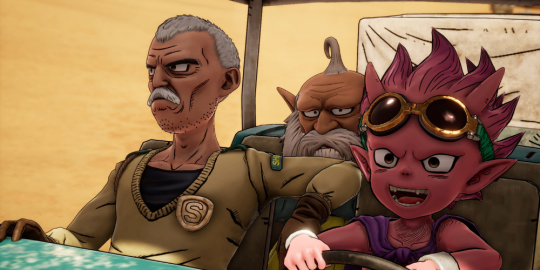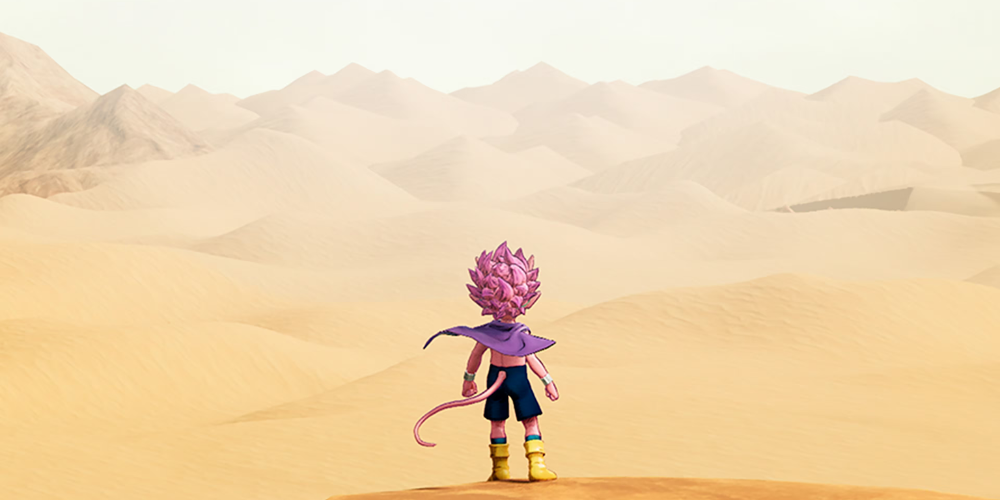
In the evolving landscape of video game adaptations of manga, Sand Land emerges, attempting to carve its niche amidst expectations set by its illustrious predecessor, Akira Toriyama. Amidst the current dearth of car-based combat games, this title aims to revitalize the genre, drawing inspiration from Toriyama's manga while endeavoring to innovate. However, it discovers itself battling against the shadows of past glories, striving to surpass its origins yet faltering in the ambition of its execution.
The Quest Begins
Sand Land's premise is captivating, introducing players to a post-apocalyptic wasteland devoid of water, ruled by a tyrannical king and an oppressive government. The protagonist, Demon Prince Beelzebub, joins forces with Sheriff Rao and Thief in a mission teeming with promise and peril. Their journey, framed as a 20-hour epic quest, is not just a mission to dethrone a king but a deeper exploration of redemption, camaraderie, and the blurred lines between good and evil.

Where Character Meets Road
The heart of Sand Land's narrative beats strongest in the quiet moments off the main path where character development shines. Beelzebub, depicted with a surprising domesticity and a relatable imposition from his father, Lucifer, offers more than the typical demon prince trope. The game engages in a delicate moral dance, presenting humans, rather than the demonic, as the architects of genocide and destruction, with Rao's character arc providing a poignant critique of the nature of evil.
Veering Off Course
However, the journey through Sand Land begins to falter as the narrative plods into the Forest Land biome. Here, the game's flaws emerge starkly against the backdrop of Toriyama's original work. The vibrant and open world of the desert biome narrows into a series of repetitive, corridor-based missions that strip the game of its earlier sense of adventure and openness. Character development stalls, leaving our protagonists treading water in a sea of missed opportunities.
The Combat Conundrum
In the realm of combat, Sand Land divides its identity. On foot, Beelzebub's battles become a slog of dodges and punches that lack the responsiveness and finesse one might expect from a demon prince. This clunky combat is in stark contrast to his portrayal as a formidable fighter in cutscenes, highlighting a discord between narrative and gameplay that pulls players out of the immersion.

Salvation on Wheels
Yet, it is within its vehicular combat that Sand Land finds its soul. The variety and exhilaration of battling with tanks, hover cars, and motorbikes injects life into the gameplay, offering a much-needed counterbalance to the on-foot combat's shortcomings. The strategic depth of choosing the right vehicle for the right battle, coupled with the thrill of high-speed chases and explosive showdowns, showcases Sand Land's potential to offer something truly engaging.
Customization and Progression
The customization options available through side missions add layers to the vehicular combat, allowing players to feel a tangible sense of progression and personalization. This system, tying vehicle upgrades to exploration and quest completion, stands as a beacon of the game's innovative spirit, marrying RPG elements with action-packed gameplay to create moments of genuine fun and creativity. In reflection, Sand Land's ambition to follow in the footsteps of Akira Toriyama's legacy is both its driving force and its Achilles' heel.
While it triumphs in vehicle combat and customization, it stumbles in delivering a coherent and engaging narrative through its character development and on-foot combat. The game, caught between the desire to innovate and the reverence for its source material, navigates an uneven terrain, reminding players of the challenges in adapting revered stories to interactive mediums.